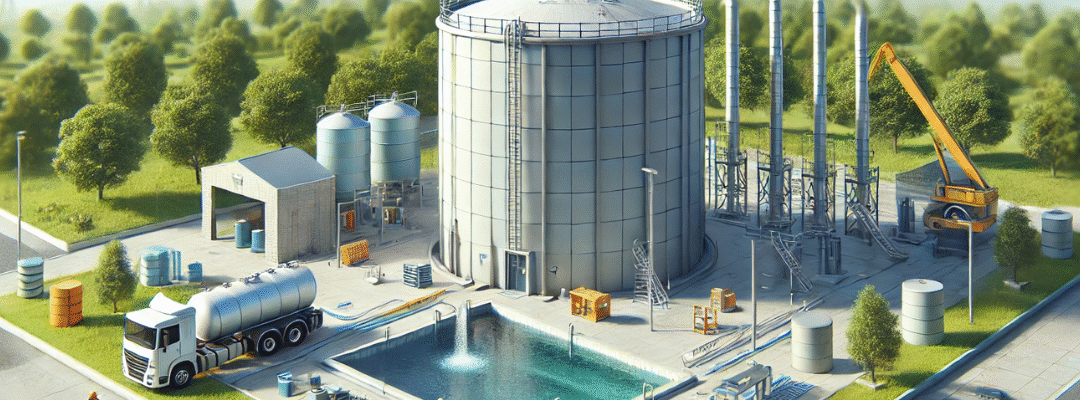Proper maintenance of water storage tanks is essential to preserve water quality, extend tank lifespan, and prevent costly damage. Whether you use the tank for potable water, rainwater harvesting, or industrial use, these maintenance practices will help keep your system reliable and hygienic.
1.Perform Regular Inspections
- Leak & Crack Detection: Inspect all external surfaces, pipe joints, and valves monthly for leaks, corrosion, or physical damage.
- Check Tank Roof & Covers: Ensure lids are secure and sealed to prevent contamination from insects, animals, or debris.
- Foundation Integrity: Look for ground settling, pooling water, or shifting that might compromise the tank’s stability.
2.Schedule Routine Tank Cleaning
- Annual Cleaning: At a minimum, clean the tank once a year—more often in areas with poor incoming water quality.
- Debris Removal: Drain the tank completely and scrub interior walls to remove biofilm, algae, or sediment.
- Safe Cleaning Products: Use food-safe, non-toxic cleaners. Avoid bleach unless properly diluted and rinsed.
3.Test Water Quality Regularly
- Check for Contaminants: Test for pH, bacterial content (e.g., E. coli), turbidity, and residual chlorine (if used).
- Taste & Odor Monitoring: Unusual smells or tastes can signal bacterial growth, chemical contamination, or stagnation.
4.Maintain Inlet Screens & Filters
- Clear Blockages: Clean inlet and outlet mesh screens regularly to maintain smooth water flow.
- Replace Filters: Follow manufacturer guidelines for sediment, carbon, or UV filter replacement.
5.Inspect Vents & Pest Barriers
- Screened Ventilation: Ensure all vents are mesh-covered to block insects, birds, and rodents.
- Gasketed Lids: Use sealed manholes or hatch covers with locking systems for added security.
6.Preserve Coatings & Linings
- Surface Coating Check: For concrete or metal tanks, examine internal coatings for peeling, blistering, or rust.
- Rust Control: Apply anti-corrosion treatment if signs of oxidation are present—especially in coastal or humid zones.
7.Manage Overflow & Drainage
- Clear Overflow Paths: Ensure the overflow pipe is free of obstructions and directs water safely away from foundations
- Perimeter Drainage: Prevent waterlogging by ensuring proper site grading or installing French drains if necessary..
8.Calibrate Water Level Sensors
- Sensor Accuracy: Test electronic float sensors, dip gauges, or level monitors to ensure they show correct water levels.
- Automated Systems: Maintain any pressure switches, control valves, or pump systems connected to the tank.
9.Prevent Algae & Biofilm Buildup
- Sunlight Protection: Use opaque or UV-resistant materials to minimize algae-promoting light exposure.
- Safe Algaecides: If algae is persistent, use approved water treatment tablets suitable for your tank type.
10.Disinfection & Sterilization
- Chlorination: Use diluted chlorine or calcium hypochlorite periodically, especially after cleaning or contamination.
- UV Purification: Install UV disinfection systems for potable water tanks to kill microbes without chemicals.
11.Inspect Plumbing Connections
- Joint Sealing: Look for leaks around valves, elbows, and pipe unions. Tighten or replace as needed.
- Install Backflow Preventers: These are essential to prevent contaminated water from re-entering clean supply lines.
12.Maintain the Surrounding Area
- Contaminant Control: Keep chemical storage, compost piles, and septic systems away from the tank area.
- Vegetation Management: Trim bushes and remove tree roots that could threaten underground connections or crack foundations.
13.Prevent Water Stagnation
- Use Circulation Pumps: For infrequently used tanks, install low-flow pumps or mixers to circulate water.
- Rotate Usage: If you have multiple tanks, alternate use to keep water fresh.
14.Keep Maintenance Records
- Track Everything: Document all inspections, cleaning dates, water tests, and repairs
- Follow Manufacturer Guidelines: Stick to your specific tank’s care recommendations for coating reapplication and component lifespan..
15.Respond Quickly to Issues
- Don’t Delay Repairs: A small leak today can turn into structural failure tomorrow.
- Add Preventive Features: Install lightning protection for metal tanks or floating debris barriers for open systems.

